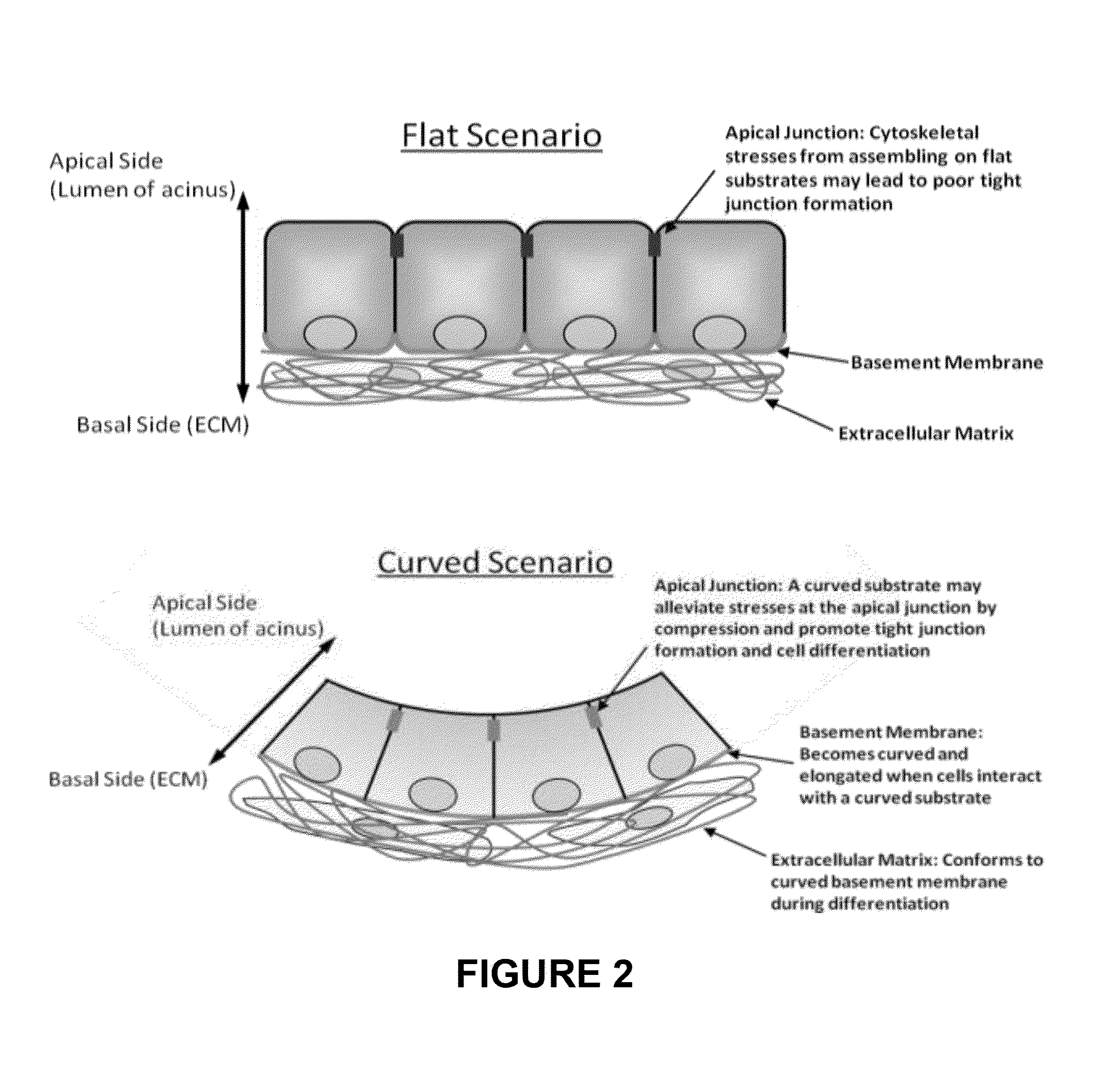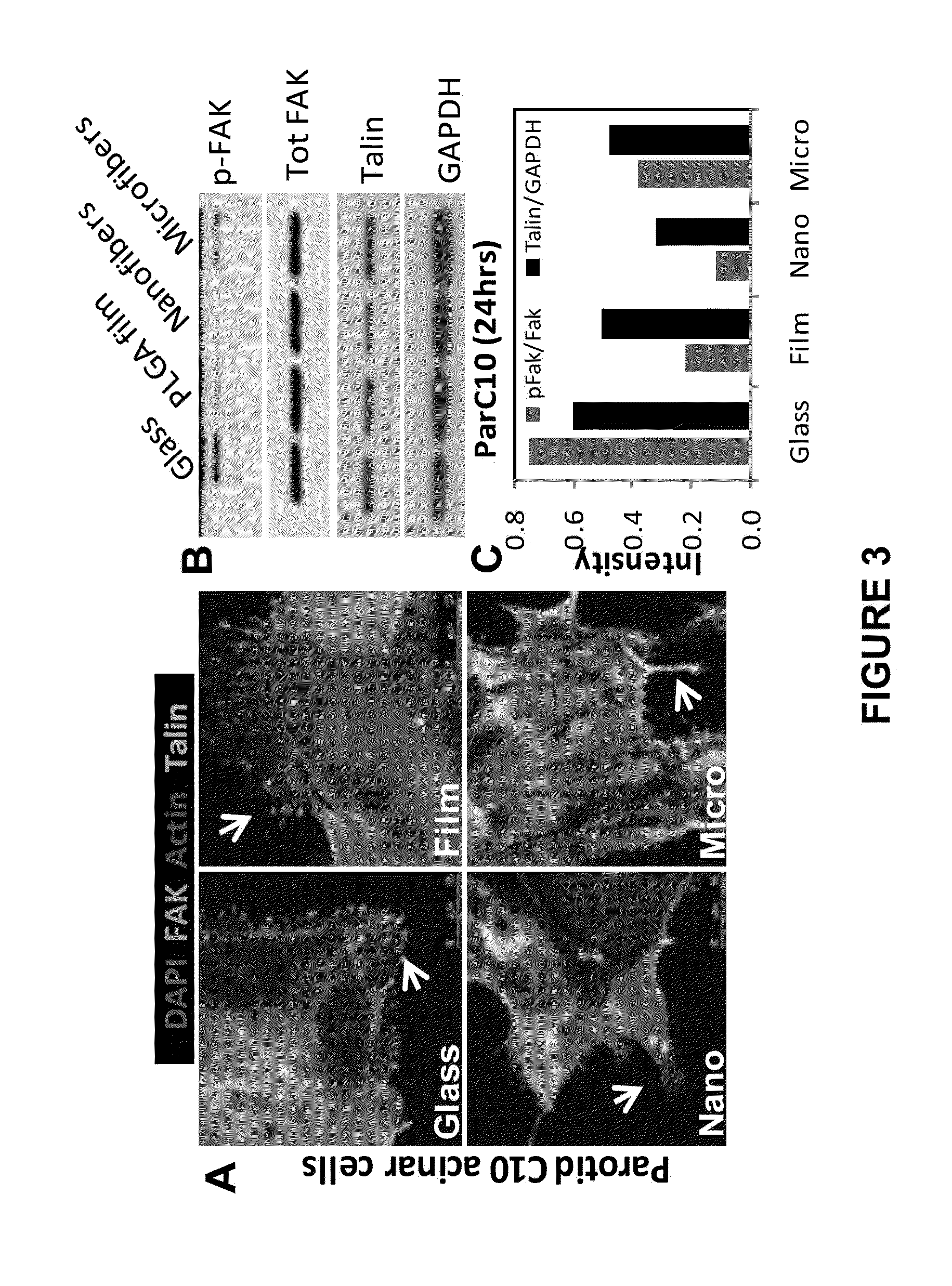Polymeric Support With Nanofeatures for Cell Culture
a technology of nano-features and polymeric support, which is applied in the direction of artificial cell constructs, biomass after-treatment, specific use bioreactors/fermenters, etc., can solve the problems of decreased quality of life of patients with these conditions, inadequate treatment methods, and decreased quality of life of patients
- Summary
- Abstract
- Description
- Claims
- Application Information
AI Technical Summary
Benefits of technology
Problems solved by technology
Method used
Image
Examples
example 1
Electrospinning of Polylactic-Co-Glycolic Acid Nanofiber Structures
[0096]Poly(D-lactide-co-glycolide) (PLGA), with a lactic to glycolic acid ratio of 85:15 and a molecular weight of 95,000 Da, was purchased from Birmingham Polymers (Pelham, Ala.). Hexafluoroisopropanol (HFIP), dimethylformamide (DMF), sodium chloride (NaCl), and magnesium sulfate (MgSO4) were purchased from Sigma-Aldrich USA (St. Louis, Mo.). An automatic syringe pump was purchased from New Era Pump Systems Inc. (Wantagh, N.Y.). 3 ml syringes were purchased from Becton, Dickinson and Company (Franklin Lakes, N.J.). Needles with an inner diameter of 0.25, 0.41 and 0.51 mm were purchased from EFD Inc. (East Providence, R1). Polytetrafluoroethylene (PTFE) tubing was purchased from VWR International (West Chester, Pa.). All chemicals were used as supplied without further purification.
Electrospinning Setup
[0097]Methods and devices for electrospinning are well known in the art. To electrospin a nonwoven mat of nano- and m...
example 2
Cell Culture, Viability Assays and SEM Characterization of Cells on Nanofibers
[0104]SIMS, an immortalized submandibular salivary gland epithelial cell line derived from a 22 day old mouse [20, 24], was cultured in complete cell media, Dulbecco's Modified Eagle Medium (DMEM), 10% fetal bovine serum (FBS), and 100 U / ml penicillin-streptomycin, as previously described (all Invitrogen, Carlsbad, Calif.).
[0105]PLGA fibers were electrospun onto 12 mm glass coverslips coated with Vectabond (Vector Laboratories), as per manufacturer's protocols, and placed into individual wells in a 24-well tissue culture plate. Vectabond-coated glass coverslips without fibers and flat PLGA polymer-coated glass coverslips were used as flat surface and material controls, respectively. Approximately 50 μl of 3% (w / v) PLGA in HFIP was added to each coverslip and air-dried for 24 hrs at room temperature to create the flat PLGA coatings. All surfaces were sterilized by UV irradiation for at least 1 hr, pre-soake...
PUM
 Login to view more
Login to view more Abstract
Description
Claims
Application Information
 Login to view more
Login to view more - R&D Engineer
- R&D Manager
- IP Professional
- Industry Leading Data Capabilities
- Powerful AI technology
- Patent DNA Extraction
Browse by: Latest US Patents, China's latest patents, Technical Efficacy Thesaurus, Application Domain, Technology Topic.
© 2024 PatSnap. All rights reserved.Legal|Privacy policy|Modern Slavery Act Transparency Statement|Sitemap



